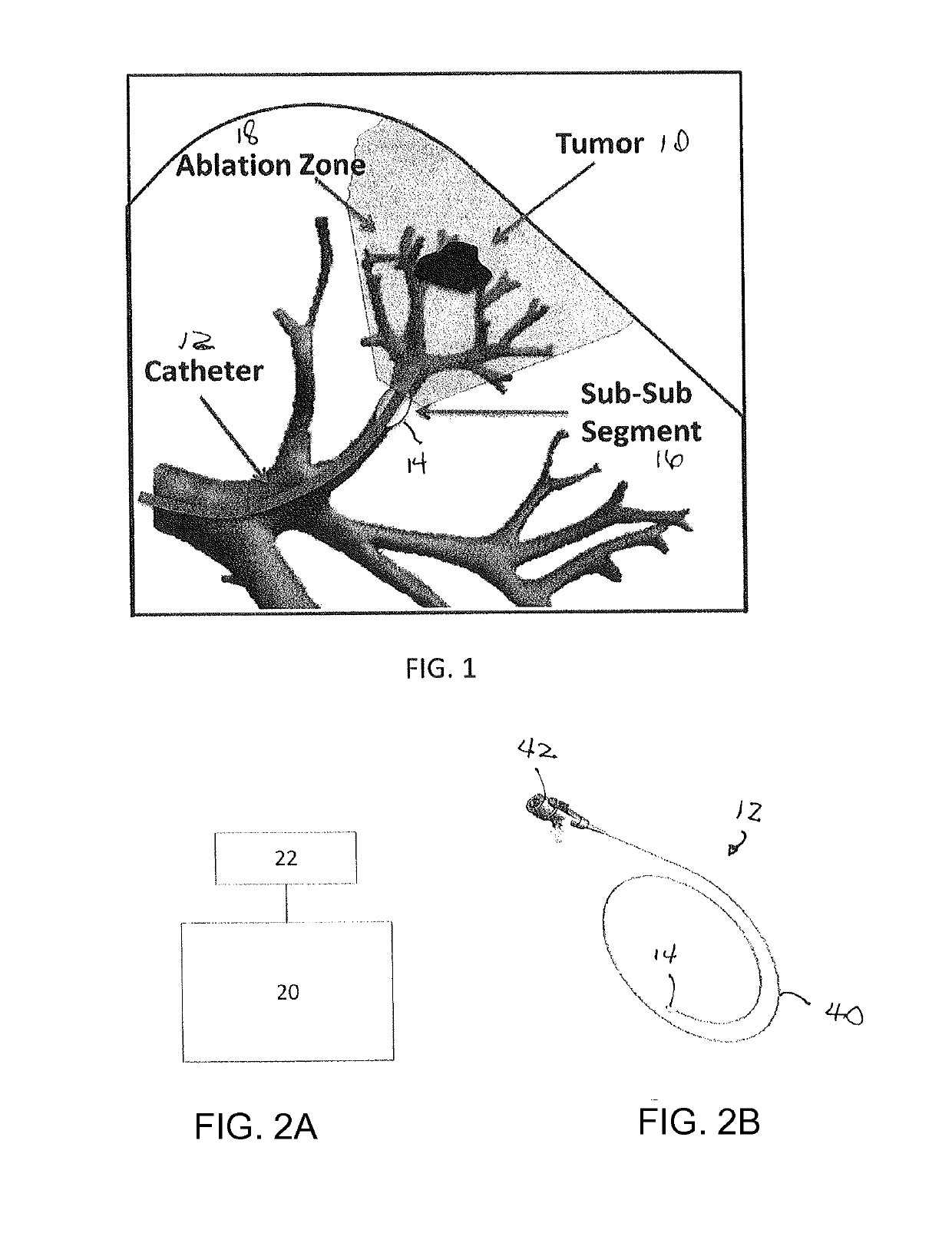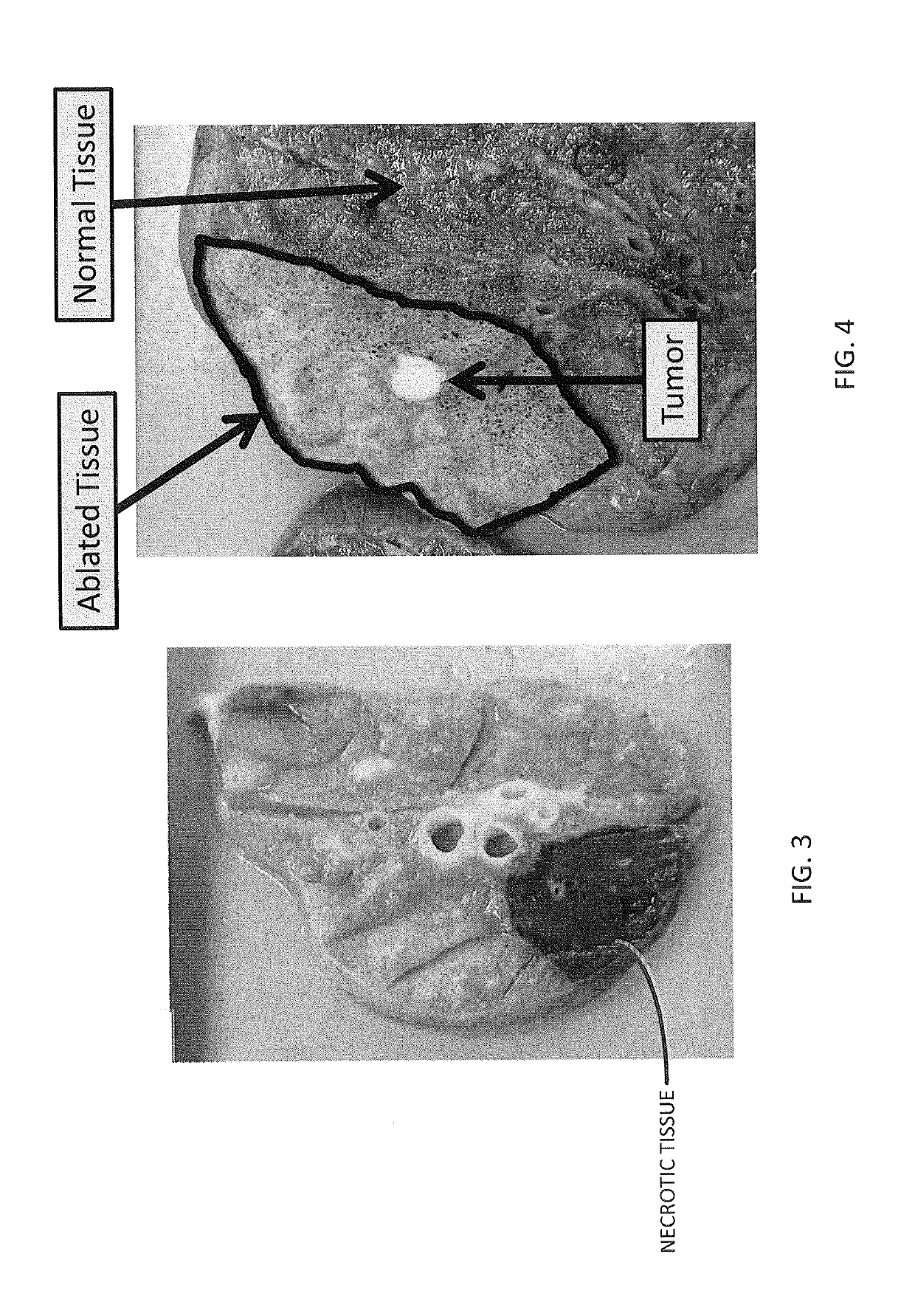Vapor treatment of lung nodules and tumors
a technology for applied in the field of vapor treatment of lung nodules and tumors, can solve problems such as necrosis of the lesion
- Summary
- Abstract
- Description
- Claims
- Application Information
AI Technical Summary
Benefits of technology
Problems solved by technology
Method used
Image
Examples
example 1
[0043]The ability to create a uniform field of tissue necrosis in a lung segment (including lung subsegments and sub-subsegments) was examined in animal tests. Of routinely studied large animals, the pig lung is the most similar to the human lung in terms of airway diameters and volumes. However, it differs from human lungs with respect to the absence of collateral ventilation between sub-segmental regions. This lack of collateral ventilation in the pig lung creates a closed path which restricts venting of the segment during vapor delivery.
[0044]A total of 11 Yorkshire pigs were used in this study, including 3 females and 8 castrated males. The average weight at the time of treatment was 56.6 kg (range: 46.4-67 kg). For each treatment, a bronchoscope was used to navigate to the segment, the catheter described above with reference to FIG. 2 was placed in the airway under visual guidance via the bronchoscope, and the balloon was inflated to seal the airway.
[0045]After the end of the s...
example 2
[0050]The system described above with respect to FIG. 2 was used to deliver 57 treatments to 6 ex vivo pig lungs at 3 different energy levels. The uniformity of the collagen denaturation was characterized to establish potential for efficacy at various energy levels. Each treatment to the ex vivo tissue causes collagen denaturation. It takes more heat to denature collagen than it does to permanently kill living tissue. Therefore collagen denaturation is a suitable marker for tissue that would be non-vital after treatment if it were in vivo.
[0051]The collagen denaturation boundary due to ablation was characterized to be either well-defined or not well-defined. Vapor is constrained by the anatomy to which it is delivered. A well-defined ablation boundary includes the pleural surface and has sharp edges that follow segmental divisions. The best treatment result is one that has a uniform effect and has a distinct boundary that reaches the pleural surface; a distinct boundary suggests tha...
example 3
[0054]The system described above with respect to FIG. 2 was used to deliver 63 treatments to 5 ex vivo canine lungs at 5 different energy levels. The uniformity of the collagen denaturation was characterized to establish potential for efficacy at various energy levels. Ablation uniformity (collagen denaturation due to ablation characterized to be either homogenous or to have degrees of heterogeneity) and ablation boundary (collagen denaturation boundary due to ablation was characterized to be either well-defined or not well-defined). Vapor is constrained by the anatomy it is delivered to. A well-defined ablation boundary includes the pleural surface and has sharp edges that follow segmental divisions. An energy range of 125 to 450 calories at 8 seconds was evaluated. Table 4 summarizes the primary endpoints for all treatments delivered.
[0055]
TABLE 4EnergyUniformAblation(calories)AblationBoundary125 ± 209 / 10 (90%)4 / 10 (40%)270 ± 2013 / 13 (100%)13 / 13 (100%)330 ± 20 9 / 9 (100%) 9 / 9 (100%...
PUM
 Login to View More
Login to View More Abstract
Description
Claims
Application Information
 Login to View More
Login to View More - R&D
- Intellectual Property
- Life Sciences
- Materials
- Tech Scout
- Unparalleled Data Quality
- Higher Quality Content
- 60% Fewer Hallucinations
Browse by: Latest US Patents, China's latest patents, Technical Efficacy Thesaurus, Application Domain, Technology Topic, Popular Technical Reports.
© 2025 PatSnap. All rights reserved.Legal|Privacy policy|Modern Slavery Act Transparency Statement|Sitemap|About US| Contact US: help@patsnap.com


